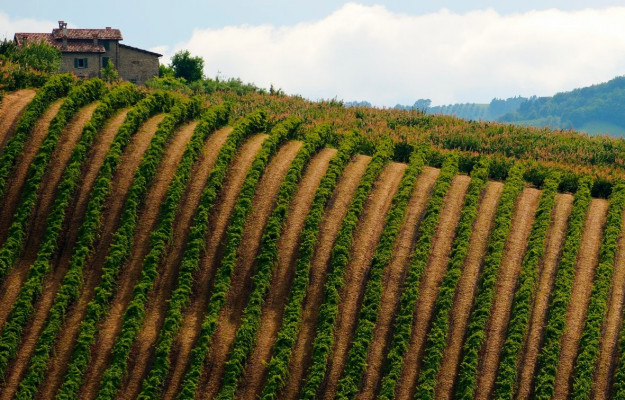With climate change, less water, and the EU’s desired but also imposed goal of using fewer and fewer chemicals in agriculture, many believe that the future of viticulture lies in resistant vines. And, while companies that experiment with them and projects that study them multiply, one of the most significant, in terms of the size and weight of the subjects involved, is the one set up in Emilia Romagna by the Vitires Consortium, which brings together four cooperative groups (Cantine Riunite & Civ, Cantina Sociale di San Martino in Rio, Caviro, Terre Cevico) and the Ri.Nova research center.
As reported yesterday in Imola, a process started in 2016 on some international vines and then expanded to eight local vines is producing excellent results. “This is a horizontal project that brings together 70% of the grapes produced in our region and 11% nationally, according to Marco Nannetti, president of Terre Cevico and the Vitires Consortium. The union arose from a sense of responsibility for cooperation towards the territory, aware that the wine industry faces daily challenges such as climate change and pathogens, which add to a complex picture. Teaming up and giving an answer as a territory means making viticulture sustainable and close to the people”.
“The project began in 2016, according to Giovanni Nigro, head of the Ri.Nova wine sector, and initially focused on the verification of nine varieties resistant to fungal pathogens, with international diffusion. Almost simultaneously (March 2017), the first genetic improvement program for the development of pathogen-resistant Emilia-Romagna varieties began: Sangiovese, Trebbiano Romagnolo, Albana, Grechetto gentile, Ancellotta, Lambrusco Salamino, Lambrusco Grasparossa, and Lambrusco di Sorbara. Following the first phase of crossbreeding, which lasted from 2017 to 2020, and subsequent selection, the resistant genotypes were planted in Tebano in 2021 in a specific experimental vineyard of about 2 hectares. Following that, it was possible to identify the first selections (genotypes) that demonstrated resistance to pathogens (particularly powdery mildew and downy mildew), adaptability to our cultivation environments, including climate change, and oenological potential in comparison to traditional reference varieties. Furthermore, following the positive results obtained so far and the recognition that Emilia Romagna viticulture is also strongly linked to more local varieties, in 2021 the Vitires Consortium promoted a second genetic improvement program on 8 other indigenous varieties: Bombino white, aromatic Malvasia di Candia, Famoso-Trebbiano Modenese, Terrano, Lambrusco Maestri, Lambrusco Oliva, Lambrusco Marani.
“This project - added Riccardo Velasco, director of Crea - has involved us from the beginning, like the Edmund Mach Foundation of San Michele all’Adige, which had launched programs for the genetic improvement of grape varieties in Trentino a few years earlier. Emilia Romagna has taken this path and has done well because they are important choices for the future of viticulture”. “There are three reasons - said the Regional Councilor for Agriculture, Alessio Mammi - which make this project valid: they highlight the foresight of cooperation in seeking shared solutions in the face of difficulties; proposes a path that is not impromptu, but structural in the medium-long term; the companies that founded it collaborate with the supply chain, to find effective and shared solutions on the territory. This vision is needed to compete in international markets as an Emilia-Romagna system”.
Copyright © 2000/2025
Contatti: info@winenews.it
Seguici anche su Twitter: @WineNewsIt
Seguici anche su Facebook: @winenewsit
Questo articolo è tratto dall'archivio di WineNews - Tutti i diritti riservati - Copyright © 2000/2025








































































































































































































